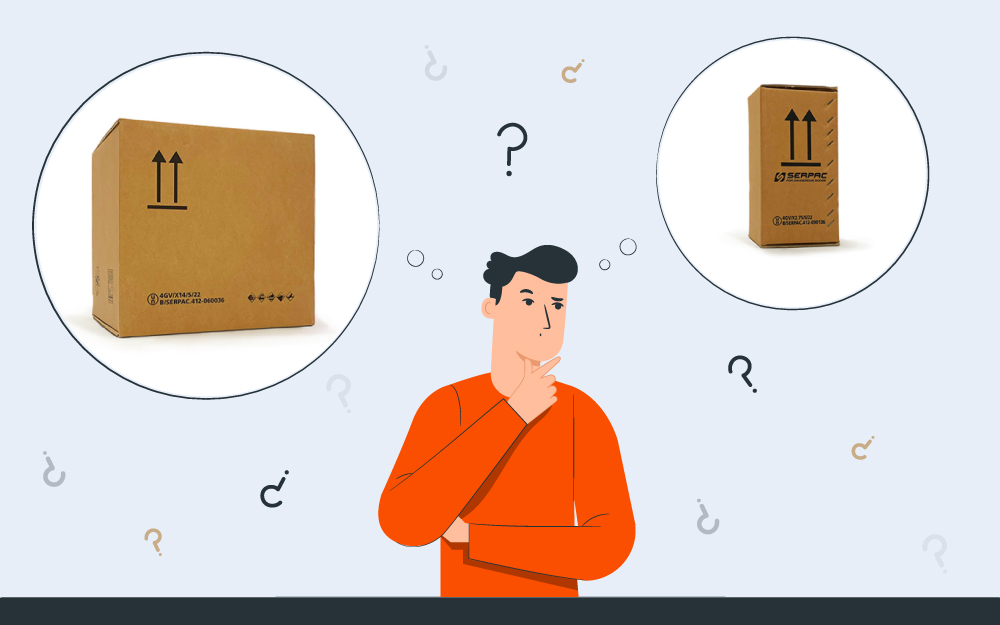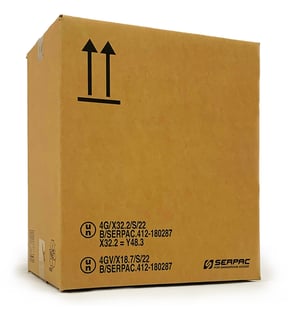How to choose the right 4GV

4GV packaging has made shipping dangerous goods easier for shippers with a variety of inner receptacles they need to transport and that cannot be standardized, and who therefore cannot make a customized 4G package. Previously we explained on our blog how to choose the most suitable packaging for your dangerous goods, focusing also on the main differences between 4G and 4GV.
After deciding that a 4GV packaging is a right solution for you, how do you pick up one, among the many existing? Unluckily looking at the inner dimensions is not enough to choose the best packaging for you; there are many factors to consider for the right and compliant choice.
4 important steps to do the right thing
1. Absorbing material
Whether you choose an innovative 4GV, certified with specific absorbing and cushioning systems, or you choose a classic 4GV certified with vermiculite, you always have to make sure to follow precisely preparation and assembling instructions and to use the indicated absorbing and cushioning material, as well as a containing bag that has been surely used during UN-certification test phase. So, if you buy a classic 4GV packaging, you must use vermiculite to fill the box, it is not allowed to use a bit of vermiculite and a bit of something else, like Styrofoam peanuts. If you decide to use a clean and innovative solution like 4GV Safe&Clean, you will get an on-purpose kit with specific absorbing pads.

2. The thickness of cushioning material

If you choose to use a 4GV certified with vermiculite or any other loose absorbent material, you have to make sure that you pay close attention to the cushioning distances listed on the closing instructions, to ensure the right distance between different inner packagings, and between inners and box sides, bottom and top. If you already know which inner packaging to use, the best way to go about this is to take the dimensions of your inner container (Height x diameter, for example) and make sure the 4GV box you choose is large enough. For instance, our PGV80 has been tested with vermiculite as an absorbent and cushioning material. On the use and packaging instructions printed on the box, it is written that distance between different inner packagings, and between inners and box sides, bottom and top must be 20 mm. The rest of the void space must be filled with vermiculite as well.
Hence, when you choose the dimension of your 4GV box, you must always keep in mind that you will need some extra space to add absorbing material in a suitable quantity and stick to the preparation instructions of the packaging.
Also in the case of 4GV Safe&Clean, there are specific instructions about distances. The main difference with the classic 4Gvs is that these latter during packaging operations require an extra effort to verify (physically, with a ruler) that the spaces filled with vermiculite are as thick as written in the instructions. 4GVs Safe&Clean, on the other hand, do not require this effort, because if you follow the assembling instructions of the box, the result is already guaranteed.

3. Weight limit of the box
This aspect must be evaluated thoroughly. Remember, this is the gross weight allowed, which would include all components. For instance, on our PGV353 it is written that:

This means that the maximum gross weight allowed for this packaging is 14 kg. However, don’t forget that weight would include the required absorbing and cushioning material as well as the box itself. So, it is always necessary to verify a further detail: the maximum gross weight of inner packaging allowed for a certain V packaging. If the total gross weight of your inner packaging is less than or equal to the one allowed for that box, the total gross weight of the package will consequently be less than or equal to the maximum gross weight allowed. On our website and our catalog you will find precise indications about the maximum gross weight allowed for inners in every 4GV UN-certified box we sell; this, together with the minimum distances to keep, will help you to choose the right V package for your shipment.
4. Sealing of the box
The last step is about the sealing system of the box. This is very important, too. It is always necessary to always use the same system and same tape as they were tested during UN homologation tests.
Without following these details, it is not possible to choose the correct 4GV box.
Below you will find an example of the information of the PGV353 box reported in our catalog.

If you are interested in our 4GVs, or you do not know which one is the best packaging for you, contact us, we are available to choose together the most suitable packaging for your shipment.
Always stay up to date, subscribe to our newsletter!